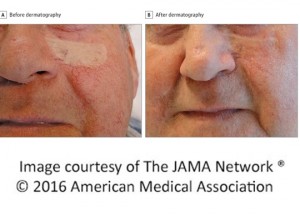EMBARGOED FOR RELEASE: 11 A.M. (ET) TUESDAY, AUGUST 23, 2016
Media Advisory: To contact Michael Levin, F.R.C.P.C.H., email m.levin@imperial.ac.uk. To contact Octavio Ramilo, M.D., call Gina Bericchia at 614-355-0495 or email MediaRelations@NationwideChildrens.org. To contact Howard Bauchner, M.D., email mediarelations@jamanetwork.org.
To place an electronic embedded link to these studies and editorial in your story These links will be live at the embargo time: https://jama.jamanetwork.com/article.aspx?doi=10.1001/jama.2016.11236
https://jama.jamanetwork.com/article.aspx?doi=10.1001/jama.2016.9207 https://jama.jamanetwork.com/article.aspx?doi=10.1001/jama.2016.11137
Two studies appearing in the August 23/30 issue of JAMA examine the use of genetic tests to help rule out a serious bacterial infection in infants with fever, and also to determine if an infection is bacterial or viral in children with fever.
In one study, Michael Levin, F.R.C.P.C.H., of Imperial College London, and colleagues investigated whether bacterial infection can be distinguished from other causes of fever in children by the pattern of host genes activated or suppressed in blood in response to the infection and whether a subset of these genes could be identified as the basis for a diagnostic test.
The majority of febrile (with fever) children have self-resolving viral infection, but a small proportion have life-threatening bacterial infections. Because clinical features do not reliably distinguish bacterial from viral infection, many children worldwide receive unnecessary antibiotic treatment, while bacterial infection is missed in others. A number of studies have suggested that specific infections can be identified by the pattern of host genes activated during the inflammatory response.
This study included febrile children presenting to participating hospitals in the United Kingdom, Spain, the Netherlands, and the United States between 2009-2013, and placed in a discovery group or validation group. Each group was classified after microbiological investigation as having definite bacterial infection, definite viral infection, or indeterminate infection. RNA expression signatures (determined with a blood sample) distinguishing definite bacterial from viral infection were identified in the discovery group and diagnostic performance assessed in the validation group. Additional validation was undertaken in separate studies of children with meningococcal disease (n = 24) and inflammatory diseases (n = 48) and on published gene expression datasets.
The discovery group of 240 children (median age, 19 months) included 52 with definite bacterial infection, of whom 36 (69 percent) required intensive care, and 92 with definite viral infection, of whom 32 (35 percent) required intensive care. Ninety-six children had indeterminate infection. The researchers identified a host whole blood RNA transcriptomic signature that distinguished bacterial from viral infection with 2 gene transcripts. The signature also distinguished bacterial infection from childhood inflammatory diseases, systemic lupus erythematosus, juvenile idiopathic arthritis, and discriminated bacterial from viral infection in published adult studies. Of the children in the indeterminate groups, 46 percent were classified as having bacterial infection, although 95 percent received antibiotic treatment.
The authors write that a major challenge in using transcriptomic signatures for diagnosis is the translation of multitranscript signatures into clinical tests suitable for use in hospital laboratories or at the bedside. “The disease risk score signature, distinguishing viral from bacterial infections with only 2 transcripts, has potential to be translated into a clinically applicable test using current technology such as polymerase chain reaction. Furthermore, new methods for rapid detection of nucleic acids … have potential for low cost, rapid analysis of multitranscript signatures.”
“This study provides preliminary data regarding test accuracy of a 2-transcript host RNA signature discriminating bacterial from viral infection in febrile children. Further studies are needed in diverse groups of patients to assess accuracy and clinical utility of this test in different clinical settings.”
(doi:10.1001/jama.2016.11236; the study is available pre-embargo to the media at the For the Media website)
Editor’s Note: Please see the article for additional information, including other authors, author contributions and affiliations, financial disclosures, funding and support, etc.
In another study, Octavio Ramilo, M.D., of Nationwide Children’s Hospital, Columbus, Ohio, and colleagues examined whether RNA biosignatures can distinguish febrile infants age 60 days or younger with and without serious bacterial infections.
Young febrile infants are at substantial risk of serious bacterial infections; however, the current culture-based diagnosis has limitations. The lack of an optimal management strategy has led to substantial variation in the care for this vulnerable population, unnecessarily exposing many infants to potential harm. A genomic approach based on analysis of the host response to infection has been investigated as an alternative. Microbial pathogens induce specific host responses or “RNA biosignatures” that can be identified using microarray analyses of blood leukocytes (white cells).
This study involved a sample of febrile infants 60 days or younger evaluated for fever in 22 emergency departments from December 2008 to December 2010 who underwent laboratory evaluations including blood cultures. A random sample of infants with and without bacterial infections was selected for RNA biosignature analysis. Afebrile healthy infants served as controls. Blood samples were collected for cultures and RNA biosignatures. Bioinformatics tools were applied to define RNA biosignatures to classify febrile infants by infection type.
Of 1,883 febrile infants (median age, 37 days), RNA biosignatures were measured in 279 randomly selected infants (89 with bacterial infections—including 32 with bacteremia and 15 with urinary tract infections—and 190 without bacterial infections), and 19 afebrile healthy infants. Sixty-six classifier genes were identified that distinguished infants with and without bacterial infections in the test set. Ten classifier genes distinguished infants with bacteremia from those without bacterial infections in the test set.
“In this preliminary study, RNA biosignatures were defined to distinguish febrile infants aged 60 days or younger with vs without bacterial infections. Further research with larger populations is needed to refine and validate the estimates of test accuracy and to assess the clinical utility of RNA biosignatures in practice,” the authors write.
“As technology advances, RNA biosignatures may prove to be an alternative and accurate method to identify infants with bacterial infections. This would help clinicians target evaluation and therapy when they are needed and avoid invasive procedures, antibiotics, and hospitalizations when they are not.”
(doi:10.1001/jama.2016.9207; the study is available pre-embargo to the media at the For the Media website)
Editor’s Note: Please see the article for additional information, including other authors, author contributions and affiliations, financial disclosures, funding and support, etc.
Editorial: Genetics and the Evaluation of the Febrile Child
“The results of these 2 preliminary studies represent promissory notes. Clearly, RNA sequencing and other techniques for RNA quantitation are in the early days of development and evaluation for clinical applications,” writes Howard Bauchner, M.D., Editor in Chief, JAMA, Chicago, in an accompanying editorial.
“The substantial decline in the prevalence of serious bacterial infection, following the introduction of conjugate vaccines, has made clinical decision making more difficult—the needle has become much smaller, and the haystack much larger, particularly in young infants. However, if the promises of findings reported in the studies by Mahajan and colleagues and Herberg and colleagues are fulfilled by replication and refinement in other rigorous investigations, it may be possible that such advances will further reduce morbidity, mortality, and costs associated with caring for febrile children. The day when a parent of a febrile child may do a laboratory test at home, call a physician, and mutually decide if that child should be seen for evaluation may soon be here.”
(doi:10.1001/jama.2016.11137; the editorial is available pre-embargo to the media at the For the Media website)
Editor’s Note: The author has completed and submitted the ICMJE Form for Disclosure of Potential Conflicts of Interest and none were reported.
# # #


